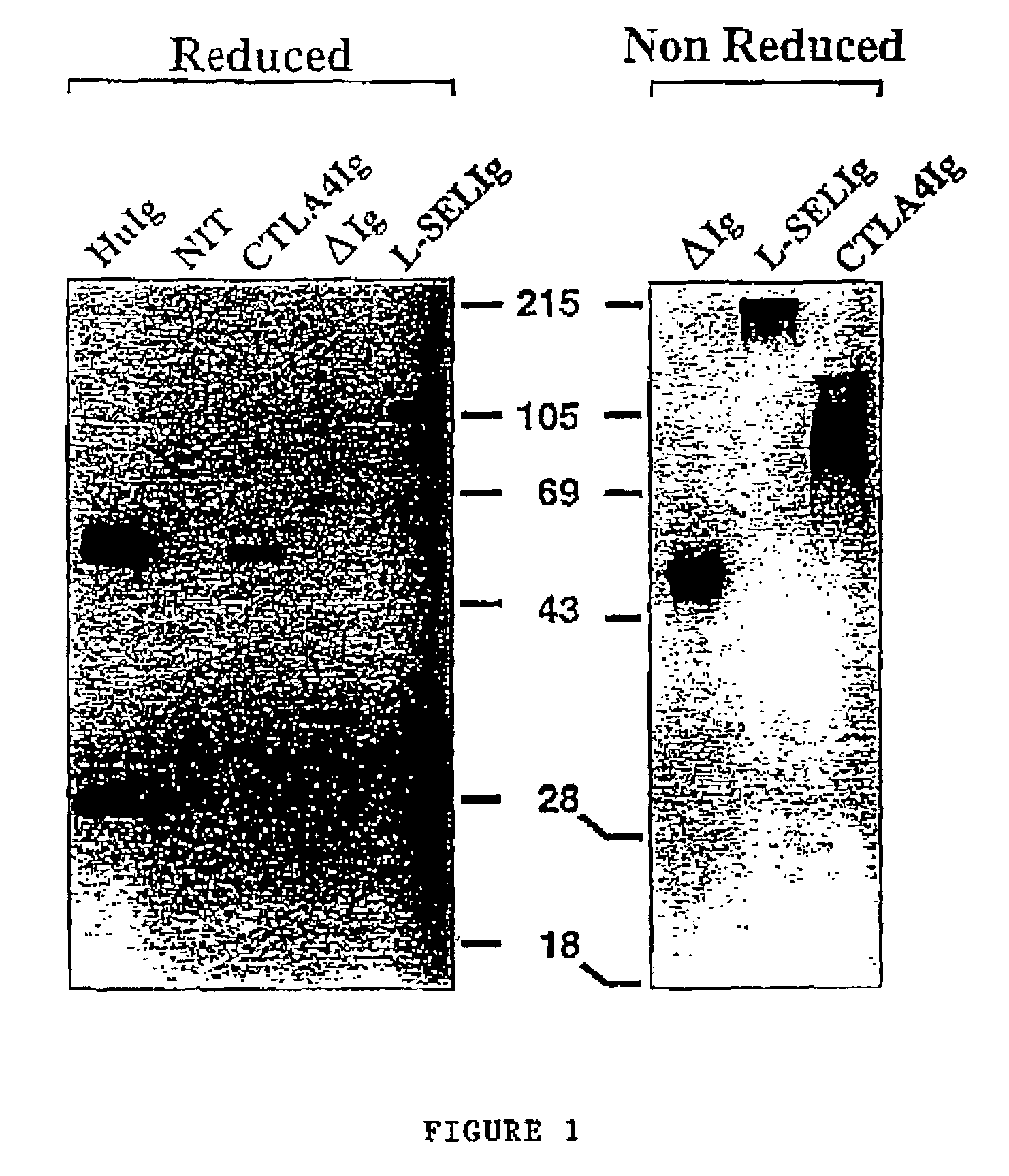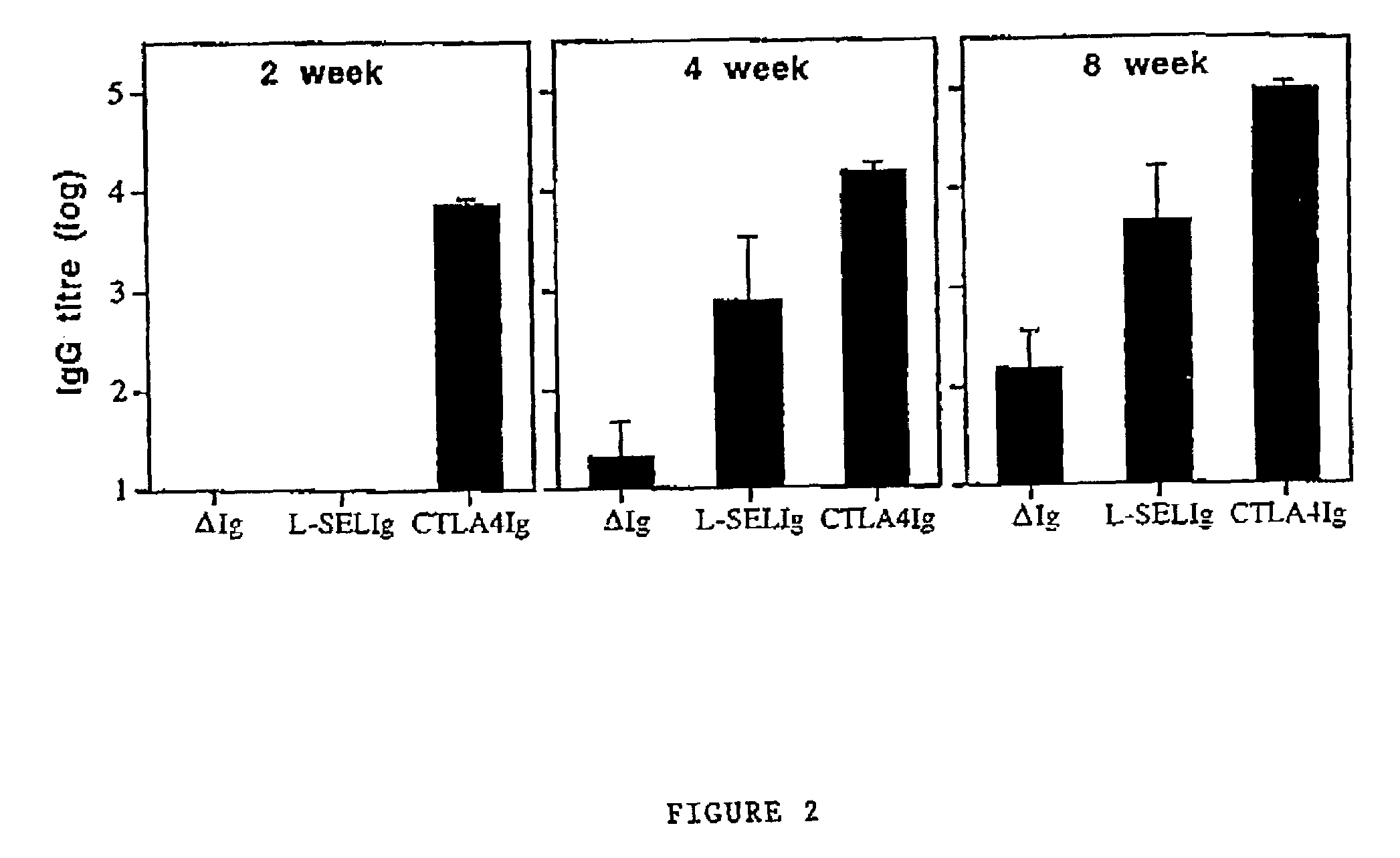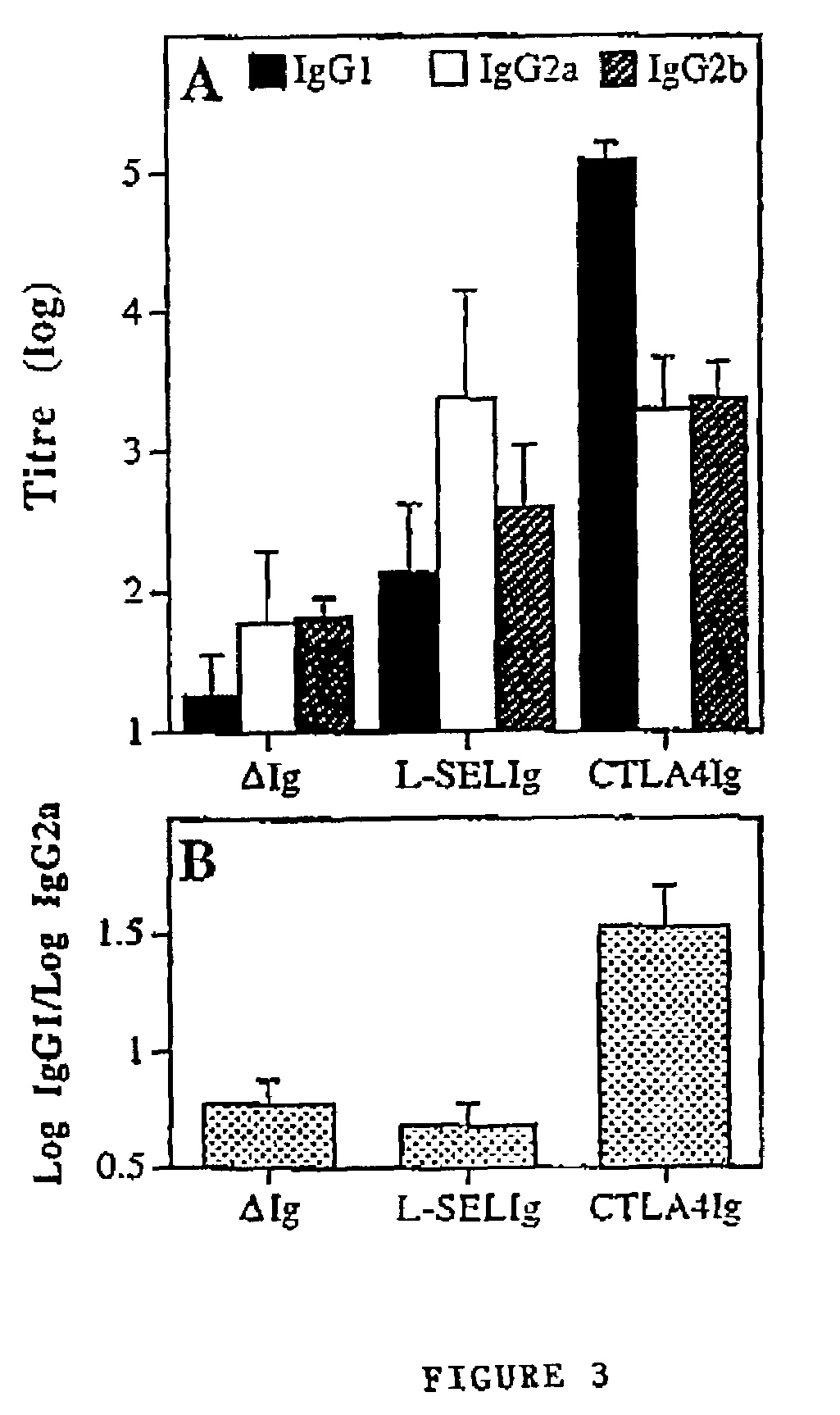Enhancement of immune response using targeting molecules
- Summary
- Abstract
- Description
- Claims
- Application Information
AI Technical Summary
Benefits of technology
Problems solved by technology
Method used
Image
Examples
example 1
Materials and Methods
Mice
[0037]Female mice (BALB / c, CBA and C57B1 / 6) aged 6 to 8 weeks were used in all experiments. Mice were maintained in SPF conditions.
Plasmids and Immunisations
[0038]Expression plasmids were constructed to produce secreted forms of the Fc fragment of human IgG1 (ΔIg) by using the Cd5 leader sequence (CD5L) either alone or fused with murine CTLA4 (mCTLA4Ig) or human L-selectin (hL-SELIg) under the control of the RSV promoter in the Rep7 or Rep10 vectors (these vectors differ only in the direction of the multiple cloning site, Invitrogen, San Diego, Calif., USA). The sequence of pREP7::CTLA4-hIg is shown in Sequence ID No. 1-Promoter RSV: 13-640, CTLA4-hIg: 703-2462. The constructs were obtained from plasmids given by Drs. P. Lane (Basel Institute, Switzerland), B. Seed (Massachusetts General Hospital, Boston, USA) and D. L. Simmons (Institute of Molecular Medicine, Oxford, UK). The following constructs were generated:[0039]pRep10::CD5T-hIG[0040]pRep7::mCTLA4-hIg...
example 2
Use of Targeting Ligand to Augment T Cell Proliferative Responses and Requirement for Dimerisation
Introduction
[0048]In Example 1 there is a demonstration that Ab levels to a model DNA vaccine could be enhanced when antigen was fused with the targeting ligands CTLA4 or L-selectin.
[0049]The hIg component would ensure dimerisation which we thought would be favourable because in general, binding of ligands to receptors is stronger when dimers are used. However, it was unclear in this system if dimerisation of the antigen targeting ligand fusion proteins was necessary for increased immune responses. To determine if the enhanced Ab response generated by antigen targeting vectors encoding proteins was dependent upon dimer formation, Ab responses were compared to immunisation with plasmid encoding monomeric antigen targeting ligand fusion proteins. The hIg component of the vectors was replaced with coding sequence for another model antigen that would not form dimers (ovalbumin; OVA).
Materia...
example 3
Use of CTLA4 to Accelerate Immune Responses Against the Host Protective Antigen of Taenia ovis Known as 45W
Introduction
[0059]The 45W antigen is a putative membrane glycoprotein present in, or underlying the tegument of, the Taenia ovis oncosphere. T. ovis is a pathogen of sheep which causes commercial losses of mutton and wool in New Zealand and other important sheep growing countries. Early immunisation studies using 45W protein partially purified from T. ovis revealed that it was a promising vaccine antigen. Subsequent field trials using recombinant forms of 45W, expressed in Escherichia coli, as a vaccine reported very high levels (about 95%) of protection13. The 45W antigen was used as a DNA vaccine in sheep and low levels of antibody, measured using a recombinant form of 45W, was observed14.
Materials and Methods
[0060]Plasmids containing the CMV promoter and the genes encoding CTLA4, the Fc portion of human immunoglobulin (hIg) and the CD5 signal peptide were described above. Th...
PUM
| Property | Measurement | Unit |
|---|---|---|
| Immunogenicity | aaaaa | aaaaa |
Abstract
Description
Claims
Application Information
 Login to View More
Login to View More - R&D
- Intellectual Property
- Life Sciences
- Materials
- Tech Scout
- Unparalleled Data Quality
- Higher Quality Content
- 60% Fewer Hallucinations
Browse by: Latest US Patents, China's latest patents, Technical Efficacy Thesaurus, Application Domain, Technology Topic, Popular Technical Reports.
© 2025 PatSnap. All rights reserved.Legal|Privacy policy|Modern Slavery Act Transparency Statement|Sitemap|About US| Contact US: help@patsnap.com



